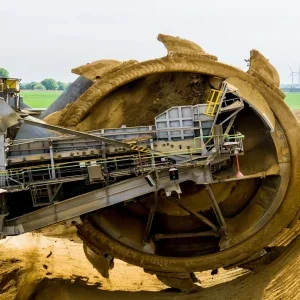HIGHLIGHTS
- Pinnacles Gold Project – Eastern Goldfields WA
- Assays received from GT5 – All 17 holes
- Best 4m composite sample – 4m @ 19.74g/t Au from 68m
- Anomalous gold 4m composite results returned in 7 of 17 holes. 3 holes return multiple anomalous zones
- Approximately 50 x 1m samples from anomalous intersections to be collected and submitted for analysis
- Balance of 31 holes 4m composite assays from GT8 and GT6 to be received over next two weeks
- 4,108m RC drill program completed testing anomalies:
– GT5 – 17 holes for 1,700m
– GT6 – 26 holes for 1,908m
– GT8 – 5 holes for 500m
The recently completed RC drill program was designed to test three previously identified high order auger soil geochemistry gold anomalies – GT5, GT6 and GT8. Samples have been submitted for analysis throughout the program, with results of the 4m composite sampling expected over the next 2 weeks.
Individual 1m samples will then be collected and submitted for analysis, on any composite sample returning >0.1g/t Au or exhibiting interesting geological features. Analysis and interpretation of the results will allow follow up drilling to be planned.
GT5 Anomaly Analytical results (4m composites) have been received from all 17 GT5 RC drill holes – being NMPRC38 to NMPRC54. Seven (out of 17) GT5 drill holes containing multiple anomalous intersections.
Gold Distribution and Exploration Model
The Pinnacles gold project occurs less than 10km along strike from the Saracen Mineral Holdings 1.97M ounce Karari / Whirling Dervish gold mines. The Nexus exploration model utilizes many of the known features of these deposits to assist in exploration planning.
The Saracen Karari deposit exhibits a strong surface expression of 1,000mx400m in calcareous soils with max >200ppb Au. This response overlies saprolite grading though saprock into fresh rock. Ore grade mineralisation occurs in the lower saprolite and saprock, above the primary mineralisation.
The surface gold anomaly at Karari is offset from the main primary mineralisation, with the surface calcrete anomaly extending laterally for several hundred meters away from the underlying mineralisation – meaning that the main mineralised lode does not occur directly beneath the surface gold anomaly. There are numerous examples of this in the W.A. goldfields – with some offsets > 1,000m. Hence it often requires numerous phases of exploration drilling to discover the exact location of the main mineralised lode.
GT5 anomaly exhibits a strong surface expression of 2,400mx300m in calcareous soils with max 107ppb Au. First pass RC drilling has returned 7 (out of 17) anomalous drillholes with 3 of the holes containing multiple anomalous intersections. Approximately 50 of the individual 1m samples will now be collected and submitted for analysis, on any 4m composite sample returning >0.1g/t Au or exhibiting interesting geological features.
Pinnacles Gold Project
The combined Pinnacles Gold Project area covers 125km2 of highly deformed Archaean greenstone sequence of basalts, dolerites, and co-magmatic high-level intrusions. This mafic volcanic association is overlain by a series of medium to coarse grained volcaniclastic sandstones and subordinate felsic volcanic rocks. These greenstones have been intruded and disrupted by the forceful intrusion of a series of granitoid rocks. This geological and structural setting is considered to be highly prospective for gold mineralisation.
The project tenements are underlain by a north-south trending Archaean greenstone sequence with the Carosue Basin volcaniclastic sediments dominating to the east of the Yilgangi Fault. To the west of the Yilgangi Fault a more mafic dominated package is observed consisting of volcaniclastic sediments intercalated with basalt and ultramafic rock units with minor units. This greenstone sequence is sandwiched between two ovoid Archaean granitoid plutons to the east and the west.
Structurally the region is cut by a series of north-south trending faults with offsets of tens to hundreds of metres. These faults are particularly common in this Carosue Dam region as the greenstone belt passes through a relatively narrow “neck” between the two granitoids. This is also the area where most of the known Carosue Dam mineralisation is concentrated. Mineralisation is known to occur proximal to, and east and west of the Yilgangi Fault. This fault is a major feature that dissects the Nexus tenement package for a strike distance of some 15km.
Auger sampling targeting calcareous soils (calcrete) has been successfully employed as the preferred geochemical sampling medium for gold exploration in the Eastern Goldfields for the past decade. Mineralisation in the Carosue Dam district, including Karari, Whirling Dervish, Luvironza, Monty Dam and Twin Peaks deposits were all identified using this technique. Historically any auger soil result of >9ppb Au was considered anomalous and targeted for follow up work.






